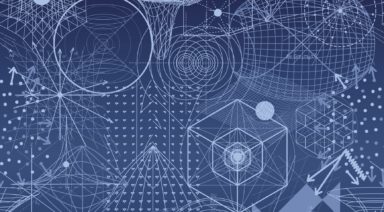Scientist: Aliens May Harness Stars to Avoid Universal Expansion

The universe is expanding quickly. So, quickly that if we don’t do something, our galaxy will get left behind, as dark energy pushes us further into the infinite abyss. Luckily, this won’t happen for billions of years, but in the meantime, we may be able to find evidence of advanced alien civilizations that are planning for this catastrophe by harnessing the energy of neighboring stars.
At least that’s according to a new paper, published by senior scientist Dan Hooper at the Fermi National Accelerator Lab at the University of Chicago, proposing that we look for signs of an advanced extraterrestrial civilization pulling stars toward their home galaxy. Why? So, they can prevent themselves from being forever lost in the cosmic expansion.
Hooper’s theory is based on the hypothetical Kardashev scale, which laid out a series of technological advancements that delineate how advanced civilizations may progress. We currently sit below a Type I, unable to harness all of the energy on our planet, but hopefully we will someday move on to a Type II, in which we will be capable of harnessing the energy of our home star, the Sun.
But if there are other, older civilizations in the universe that have had a million more years of advancement, they may already be harvesting the energy of other stars in their galaxy and thinking about preventing their galactic isolation. This is the Type III civilization.
If that’s the case, these solar harvesters might leave evidence of their work in the night sky through light signatures or fluctuations, showing them dragging stars across the sky or through evidence suggesting a controlled depletion of a star’s energy.
Hooper imagines that these civilizations would, “use the energy that is harnessed to accelerate those stars away from the approaching horizon and toward the center of the civilization.”
Astrophysicists are still confounded by dark energy, having been unable to pinpoint and define precisely what it is. Dark energy is hypothesized to permeate all of space and is thought to be responsible for the expansion of the universe into the unknown.
Within 100 billion years, all stars beyond our Local Group will be pushed away, beyond the cosmic horizon, to the point they will no longer be visible from Earth. The same expansion will eventually happen to other galaxies and superclusters throughout the universe, unless a massively powerful force is able to prevent it.
So, if we’re able to get past the petty problems we currently face on Earth, in which we’re the biggest threat to our own survival, we’ll inevitably face larger issues, like getting lost in the depths of space.
In this episode of Deep Space we explore the potential evidence of advanced extraterrestrial civilizations forming a Dyson Sphere to harness the energy of stars:
Michael Salla's Exopolitics: The Political Implication of Aliens

In academia there’s very little room to stray from your field of specialty, let alone the areas of study deemed worthwhile by the ivory tower. And no one is more familiar with this stringency than Dr. Michael Salla, a man with an impressive resume that culminated in an associate professorship teaching international politics at American University.
But about five years in to his teaching, Salla stumbled upon a deep rabbit hole of overwhelming evidence in the world of ufology and became quickly ostracized for expressing interest to colleagues. Undeterred, he continued his research independently, pioneering his own brand of government study he dubbed ‘Exopolitics.’
Today Salla enjoys notoriety as one of the most recognized names in his field, continuing to refine exopolitics’ definition as the political implications the existence of extraterrestrial life has on Earthly politics.


































